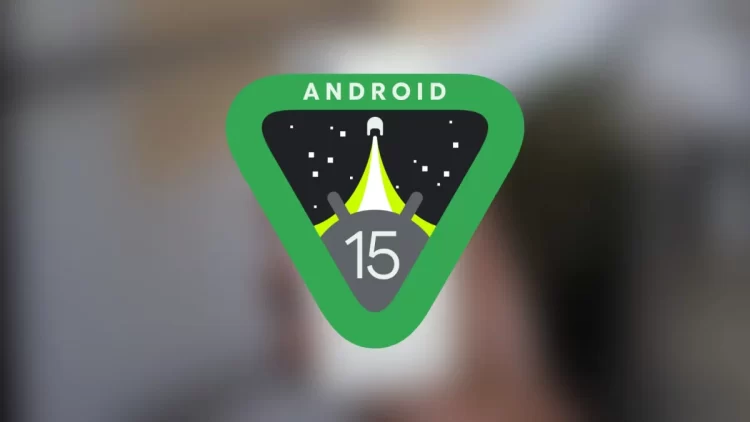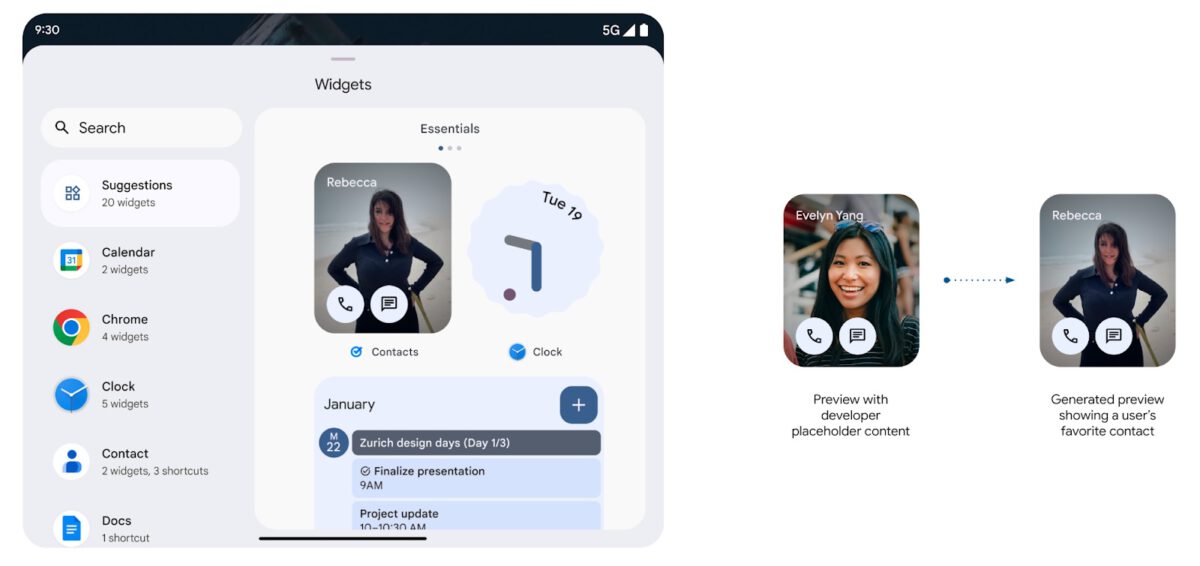Google released the second beta of Android 15 for compatible products on the second day of the Google I/O 2024 event. Usually, the company introduces the new version of Android during the keynote. However, this year, Google talked about Android on day two so that day one was just about AI.

The new version comes a few weeks after the first beta of Android 15 was released. Of course, Android 15 Beta is not compatible with Galaxy devices. Instead, Samsung will soon open the One UI 7.0 Beta Program later this year.
The beta version of Android 15 has been released with many new features
The second beta of Android 15 brings many new features as well as improved privacy and security. The most important changes are listed below.
Private space
The biggest addition is probably PrivateSpace, which is quite similar to Samsung's Secure Folder. With PrivateSpace, you can hide apps and files in a safe space. When PrivateSpace is locked, the apps inside are suspended and don't appear in the Apps screen, Share Sheet, and recently used apps list. Notifications from the app will also not be displayed.
Multitask better on foldable phones and tablets
Google has added a way to pin the Taskbar on the screen to improve multitasking on large-screen devices like foldable phones and tablets. As a result, users can switch between applications quickly.
Users can also create app pairs and pin them to the Taskbar. Samsung has had a similar feature on the Galaxy Z series for years.
The Picture-in-Picture feature provides a smoother experience
The transition animation into Picture-in-Picture mode on Android 15 already looks smoother. This improvement is most noticeable in apps with user interface elements that sit on top of video.
Personalized widget preview
Similar to iOS, widgets on Android can display personalized previews in the widget selection screen. As a result, users can know in advance how the widget will look on the Home screen.

The Back Action Preview feature is enabled by default
Previewing back gestures is a relatively new feature in Android. A preview of the screen to which the device will return is provided when the user uses the return gesture. This feature was first introduced in Android 14. However, users have to go to the Developer Options screen to turn it on. On Android 15, Back Preview is enabled by default.
Custom vibration pattern for notifications
Android 15 already supports custom vibration patterns so users can differentiate between different types of notifications without looking at the screen.
Improved health and fitness support applications
API Health Connect now supports two additional types of data: skin temperature and workout plans. As a result, health and fitness apps that use the Health Connect API can export, import, and use data more efficiently.
Pronouns can be edited in languages where nouns are divided by gender
For languages with nouns divided by gender, such as French, Android 15 allows users to choose how they are called.
Longer battery life
Services running in the background keep applications running to perform tasks. To improve battery life on Android 15, background services are now limited to six hours.
Additionally, Android 15 introduces some requirements to run background services for apps running in the background. Therefore, the application will perform better and consume less system resources. All of these changes will help improve the battery life and performance of phones and tablets.
App launch times and system performance are improved
Android 15 now supports 16KB page sizes, making heavy apps launch and respond faster, especially for memory-intensive tasks. For example, the Camera app launches 6.6% faster the first time and 4.48% faster the next time. Meanwhile, devices can boot 1.2% faster on average.
Playing AV1 video on devices that do not support hardware-level decoding will become more efficient. Google has chosen dav1d as the default decoder for AV1 video playback, which is 3 times more efficient than the old codec.
Improved gaming performance thanks to Vulkan
Google is introducing an optional layer called ANGLE to run OpenGL ES on Vulkan. This will help standardize the OpenGL implementation in Android, improving the compatibility and performance of some games. Starting next year, ANGLE will become the default way to run OpenGL on Android and also the only way to access OpenGL ES.
Supports more emojis
Google has added support for Unicode 15.1. Therefore, family-related emojis will be available on Android 15. The new Unicode version also brings a more precise orientation to emojis.
Improved Chinese, Japanese, and Korean fonts
Android 15 supports a variable font for Chinese, Japanese, and Korean called NotoSansCJK. Additionally, Android 15 includes a font file for old Japanese Hiragana (known as Hentaigana), which adds a special flair to design and art pieces while maintaining meaning. and the nuances of ancient Japanese documents.
Due to the style of some cursive fonts, the beginning or end of a letter may encroach on the space reserved for the preceding and following letters. Android 15 avoids this phenomenon by allocating more width to such letters as well as widening the padding.
The second beta of Android 15 is compatible with a few phone models from different brands excluding Samsung
More and more devices from different brands are testing the beta version of Android. This year, up to 12 phone brands are participating, including:
- Google Pixel
- HONOR
- iQOO
- Lenovo
- OnePlus
- OPPO
- Realme
- Sharp
- TECNO
- Vivo
- Xiaomi
As you can see, Galaxy phone models are not on the list. Instead, Samsung will launch its own beta program for One UI 7.0 in the third quarter of this year. Meanwhile, the stable version of One UI 7.0 may hit Galaxy devices starting in the fourth quarter of 2024.
 SamFw
SamFw

